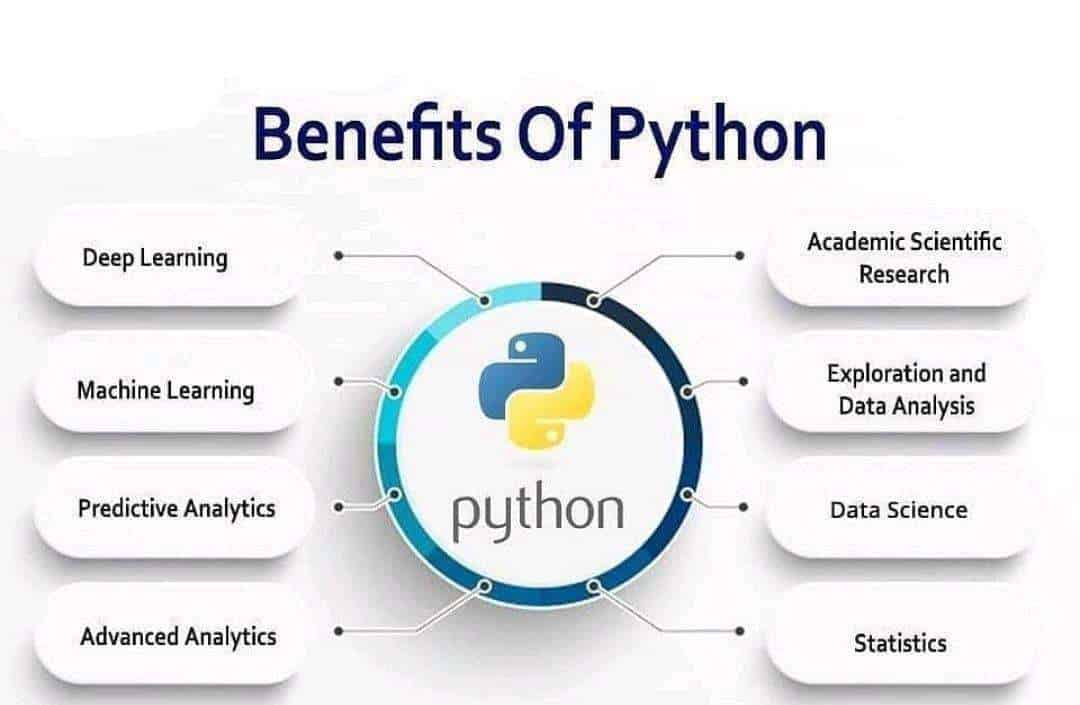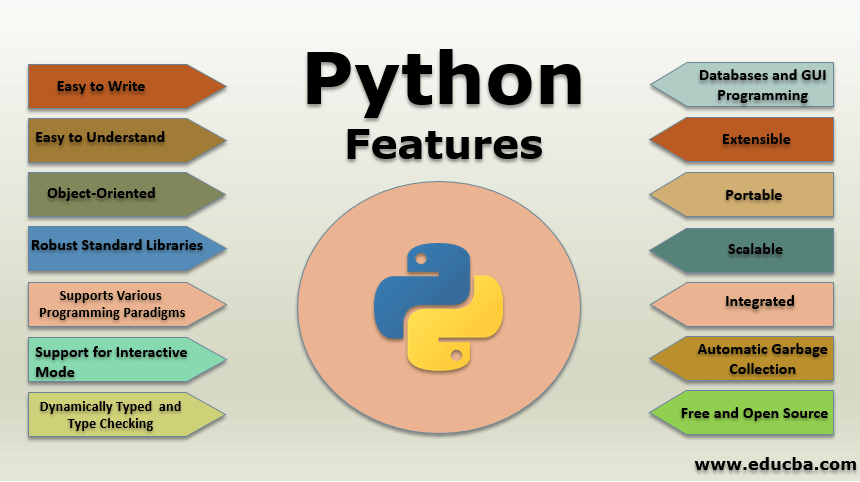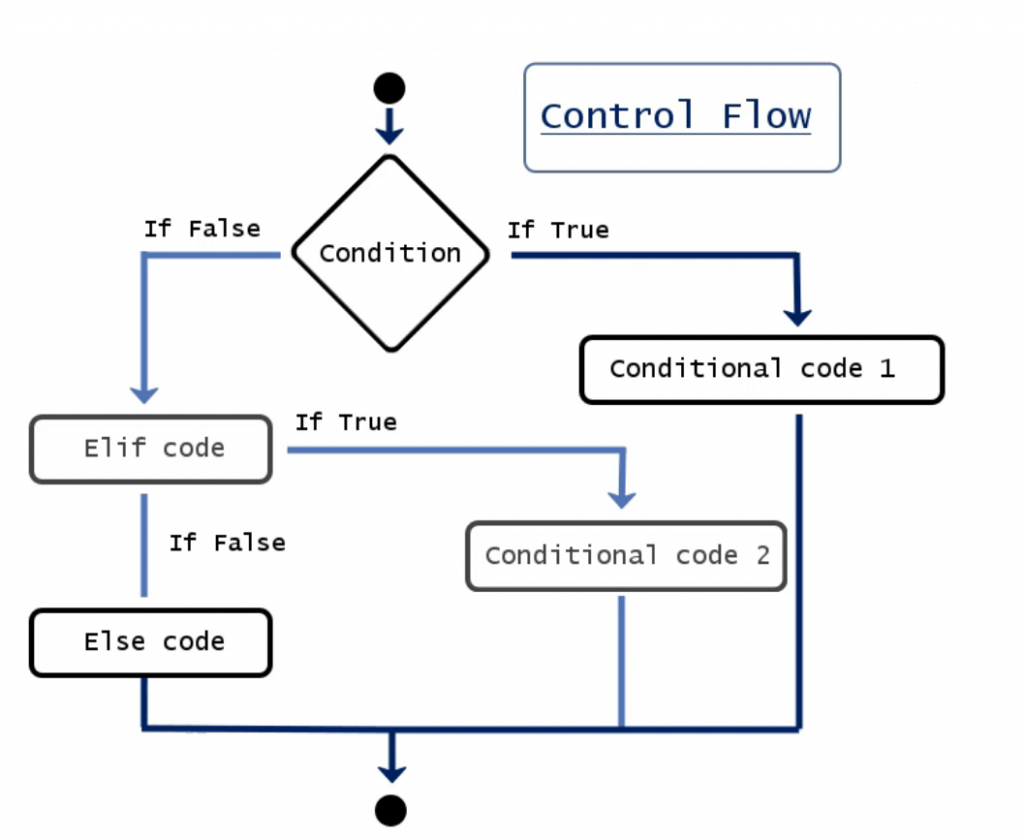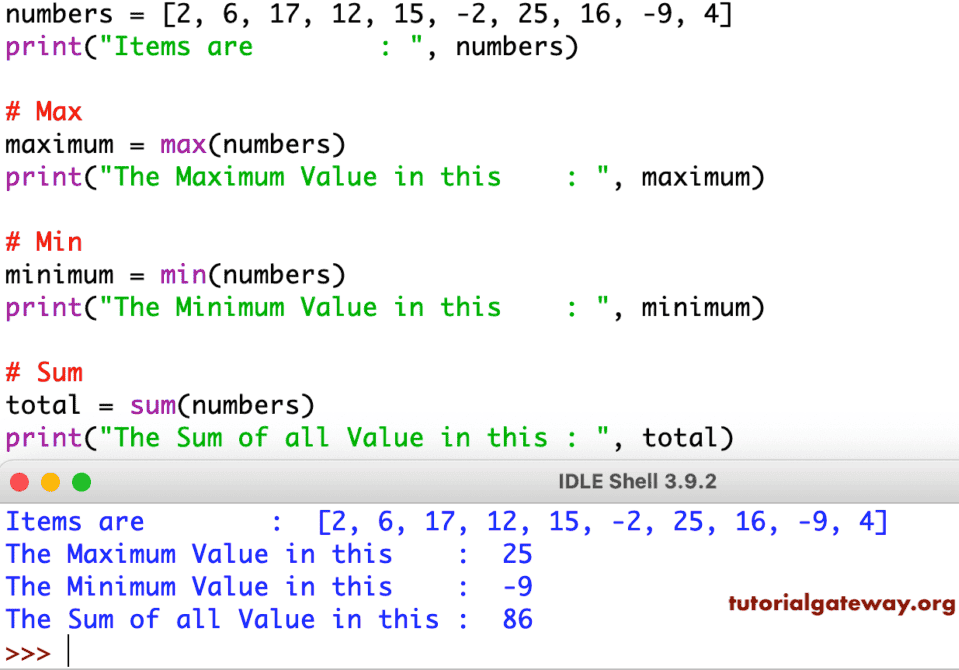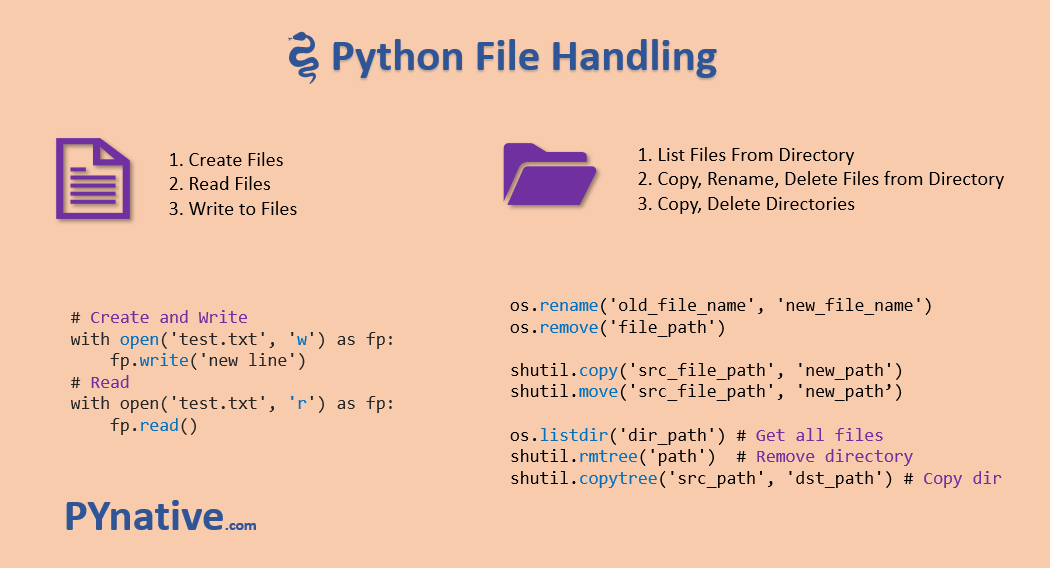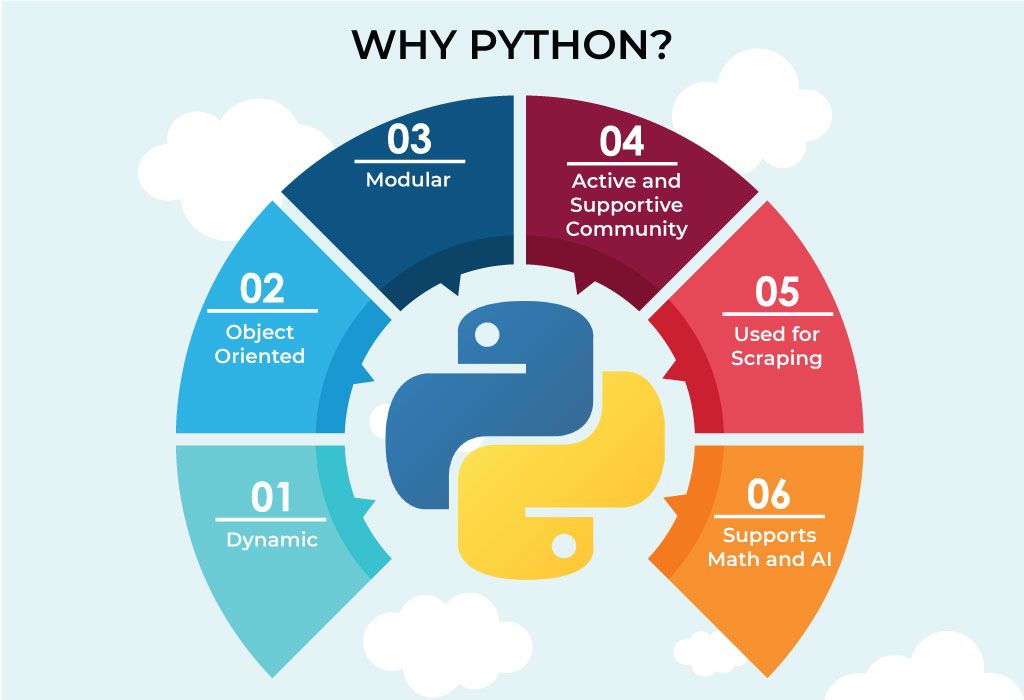Python Programming Presentation
| Introduction to Python Programming | ||
|---|---|---|
| Python is a high-level programming language that is widely used for web development, data analysis, artificial intelligence, and more. It was created by Guido van Rossum in 1991 and emphasizes code readability and simplicity. Python is an interpreted language, meaning that it is executed line by line by an interpreter rather than compiled. | ||
| 1 | ||
| Key Features of Python | ||
|---|---|---|
| Python has a clear and concise syntax, making it easy to read and write code. It supports multiple programming paradigms, including procedural, object-oriented, and functional programming. Python has a large standard library that provides a wide range of prebuilt modules and functions for various tasks. | ||
| 2 | ||
| Common Uses of Python | ||
|---|---|---|
| Python is commonly used for web development, with frameworks like Django and Flask making it easy to build robust and scalable web applications. It is extensively used in scientific computing and data analysis, thanks to libraries like NumPy, Pandas, and Matplotlib. Python is also popular in the field of artificial intelligence and machine learning, with libraries such as TensorFlow and PyTorch. | ||
| 3 | ||
| Python Syntax Basics | ||
|---|---|---|
| Python code is written in plain text files with the .py extension. Indentation is crucial in Python for defining code blocks, using spaces or tabs. Variables in Python are dynamically typed, meaning their type can change during runtime. | ||
| 4 | ||
| Control Flow in Python | ||
|---|---|---|
| Python supports conditional statements like if, else, and elif to control the flow of execution based on certain conditions. Loops such as for and while are used for iterating over sequences or executing a block of code repeatedly. Python also has control flow statements like break and continue to alter the normal execution flow within loops. | ||
| 5 | ||
| Functions and Modules in Python | ||
|---|---|---|
| Functions in Python are defined using the def keyword and can be reused throughout the code. Modules are files containing Python code that can be imported and used in other programs. Python provides a rich ecosystem of third-party modules and libraries that extend its functionality. | ||
| 6 | ||
| Error Handling in Python | ||
|---|---|---|
| Python has a built-in exception handling mechanism to catch and handle errors during program execution. The try-except block is used to catch and handle specific exceptions. The finally block ensures that a certain block of code is always executed, regardless of whether an exception occurs or not. | ||
| 7 | ||
| File Handling in Python | ||
|---|---|---|
| Python provides various functions and methods for working with files, such as opening, reading, writing, and closing them. The with statement is commonly used for file handling as it automatically takes care of closing the file after use. Python supports different file modes, such as read, write, append, and binary modes. | ||
| 8 | ||
| Debugging and Testing in Python | ||
|---|---|---|
| Python offers built-in debugging capabilities, such as the pdb module, which allows you to set breakpoints and step through code. The unittest module provides a framework for writing and running tests to verify the correctness of your code. Python also has third-party testing frameworks like pytest and nose for more advanced testing scenarios. | ||
| 9 | ||
| Conclusion | ||
|---|---|---|
| Python is a versatile programming language with a wide range of applications. Its simplicity, readability, and extensive library support make it a popular choice among developers. Whether you're a beginner or an experienced programmer, Python offers a great platform to learn, experiment, and build amazing applications. | ||
| 10 | ||
| References (download PPTX file for details) | ||
|---|---|---|
| Python.org... Official Python website. Retrieved from https... Rossum, G. (2006). The Python programming lan... |  | |
| 11 | ||
